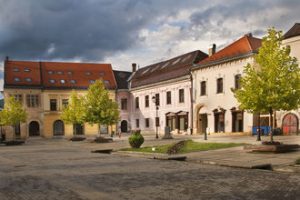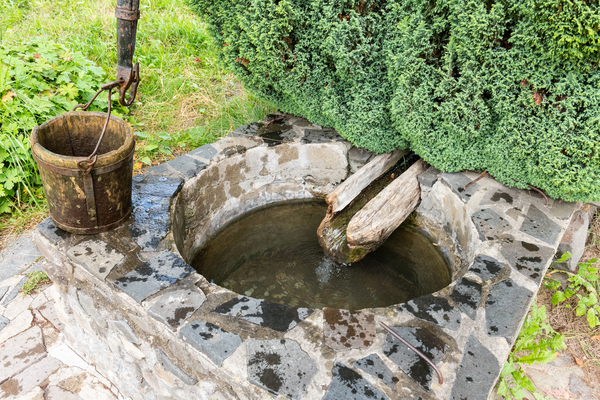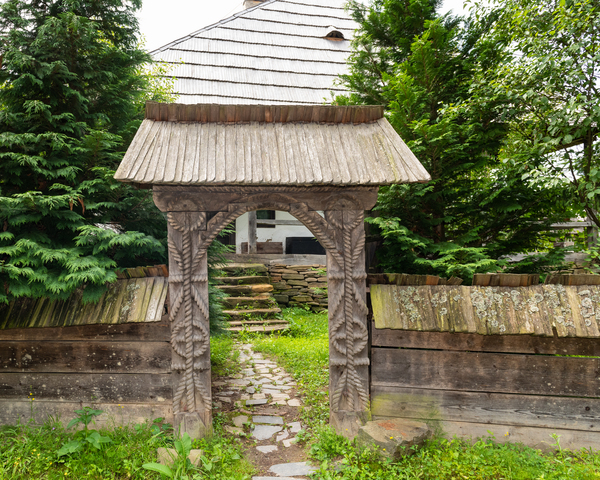Baia Mare
Baia Mare
Un oraș cu o istorie bogată în minerit, Baia Mare este situat într-o depresiune pitorească, înconjurată de munți împăduriți și râuri. Aici se găsesc minereuri neferoase, care au fost exploatate încă din secolul al XIV-lea, când orașul a fost menționat pentru prima dată în documente. Baia Mare este reședința județului Maramureș și are patru localități componente: Baia Mare, Blidari, Firiza și Valea Neagră.
Orașul este un punct de plecare pentru drumeții montane pe crestele Ignișului, Mogoșei, Gutâiului sau Creastei Cocoșului, dar și pentru turism de iarnă în stațiunile Izvoare și Mogoșa. Clima este blândă și echilibrată, datorită protecției oferite de lanțul carpatic.
România este o țară bogată în patrimoniu cultural, iar un exemplu elocvent sunt bisericile de lemn din Maramureș, recunoscute ca parte a Patrimoniului Mondial UNESCO (COD 904) din 1999. Aceste opt biserici, construite între secolele XVI și XVIII, reprezintă o moștenire valoroasă a arhitecturii tradiționale românești, care reflectă diversitatea stilistică și artistică a regiunii. Ele sunt:
Bârsana – Biserica de lemn „Intrarea Maicii Domnului în Biserică”, o construcție monumentală cu un turn înalt de 54 de metri și un acoperiș impozant;
Budești – Biserica de lemn „Sf. Nicolae”, o capodoperă a sculpturii în lemn, cu picturi interioare și exterioare de o mare frumusețe;
Desești – Biserica de lemn „Sf. Paraschiva”, o bijuterie a artei populare, cu un iconostas sculptat și pictat în stil brâncovenesc;
Ieud Deal – Biserica de lemn „Nașterea Fecioarei”, cea mai veche biserică de lemn din Maramureș, datând din 1364, cu un interior bogat decorat cu fresce medievale;
Plopiș – Biserica de lemn „Sfinții Arhangheli”, o clădire armonioasă, care îmbină elemente ale stilului maramureșean și transilvan;
Poienile Izei – Biserica de lemn „Sf. Paraschiva”, o operă de artă unică, cu picturi naive care ilustrează scene din viața lui Isus și din Apocalipsă;
Rogoz – Biserica de lemn „Sfinții Arhangheli”, o expresie a stilului nord transilvan, cu un plan simplu și un turn ascuțit;
Șurdești – Biserica de lemn „Sfinții Arhangheli”, una dintre cele mai înalte biserici de lemn din lume, cu o înălțime totală de 72 de metri.
Dacă vizitați Baia Mare, nu ratați ocazia de a admira centrul istoric al orașului, unde puteți descoperi următoarele atracții:
– Centrul istoric Baia Mare. Fosta Piață Centrală, în prezent Piața Libertății, este inima orașului, unde se află clădiri vechi și monumente importante;
– Turnul Ștefan este o anexă a Catedralei „Sfântul Ștefan”, ridicată de Iancu de Hunedoara pe parcursul secolului XV. Construit în stil gotic, turnul are 40 m înălțime și a servit ca punct de observație și apărare a orașului. În jurul lui a fost amenajată Piața Cetății;
– Monetăria din Baia Mare, edificiu ridicat între anii 1734 și 1737. Aici se băteau monede din aur și argint extrase din minele din zonă. În prezent, clădirea găzduiește Muzeul Județean de Istorie și Arheologie Maramureș;
– Turnul Măcelarilor a fost construit în secolul al XV-lea. Este cel mai vechi turn păstrat din oraș și are o legendă legată de moartea lui Pintea Viteazul, eroul local care s-a opus dominației habsburgice;
– Casa de Cultură, care dispune de o sală de spectacole cu 700 de locuri și care a fost edificată în anul 1971;
– Teatrul municipal, care funcționează din secolul al XVIII-lea și care își are sediul actual din 1967;
– Monumentul Eroilor Români din Al Doilea Război Mondial, cunoscut și sub numele de „Monumentul Ostașului Român”, care a fost inaugurat în 1960 în Câmpia Tineretului și care este dedicat memoriei militarilor români căzuți în luptă. Monumentul este o lucrare a sculptorului Andrei Ostap;
– Sfatul bătrânilor, o sculptură a artistului Vida Gheza, care se află în fața Prefecturii județului Maramureș și care reprezintă o scenă tradițională din viața rurală;
– Statuia Minerului, o altă operă a lui Vida Gheza, care se găsește în Piața Revoluției și care simbolizează importanța mineritului pentru dezvoltarea orașului;
– Biblioteca Județeană „Petre Dulfu”, care este una dintre cele mai mari și mai moderne biblioteci din țară și care oferă acces la o colecție impresionantă de cărți, reviste, ziare, CD-uri și DVD-ur;
– Muzeul Județean de Istorie și Arheologie, care expune obiecte și documente care ilustrează istoria și cultura zonei, de la preistorie până în prezent;
– Muzeul de Mineralogie, care prezintă o colecție unică de minerale și roci din zonă, dar și din alte părți ale lumii;
– Planetariul și Observatorul Astronomic, care oferă posibilitatea de a observa cerul și fenomenele astronomice cu ajutorul unor instrumente moderne și performante;
– Centrul artistic Baia Mare – Muzeul de Artă, care găzduiește opere de artă ale unor artiști locali și naționali, dar și ale unor reprezentanți ai Școlii de pictură de la Baia Mare, una dintre cele mai importante mișcări artistice din România.
– Muzeul de Etnografie și Artă Populară, care expune obiecte și costume populare specifice zonei Maramureșului, precum și elemente de arhitectură tradițională;
– Teatrul Municipal Baia Mare, care are o programare variată și de calitate, cuprinzând piese de teatru clasice și moderne, comedii, drame, musicaluri etc;
– Teatrul de Păpuși Baia Mare, care se adresează în special publicului copiilor și tinerilor, dar și adulților cu suflet de copil;
În ceea ce privește educația, Baia Mare are o ofertă diversificată și competitivă, atât la nivel preuniversitar, cât și universitar. Există 23 de școli generale, 34 de grădinițe și 18 licee, dintre care unele au tradiție și prestigiu la nivel național. De exemplu:
Colegiul Național Gheorghe Șincai, Liceul Teoretic Emil Racoviță, Colegiul Național Vasile Lucaciu, Colegiul Național Mihai Eminescu, Liceul de Artă, Colegiul Economic Nicolae Titulescu, Liceul cu Program Sportiv, Colegiul Tehnic George Barițiu, Colegiul Tehnic Anghel Saligny, Colegiul Tehnic C.D. Nenițescu, Liceul Teoretic Németh László.
Învățământul universitar este asigurat de patru universități, care acoperă diferite domenii de studiu:
Universitatea de Nord, Universitatea Bogdan Vodă din Baia Mare, Universitatea de Arte „Vatra” din Baia Mare,
Universitatea de Vest Vasile Goldiș Baia Mare.
Acest text este o prezentare succintă a principalelor atracții culturale și istorice, precum și a ofertei educaționale din Baia Mare, un oraș cu o istorie bogată și o viață culturală vibrantă.
Un proiect de succes al orașului Baia Mare a fost candidatura pentru Capitala Tineretului din România 2018-2019, pe care a câștigat-o în data de 11 noiembrie 2017. În perioada 2 mai 2018 – 1 mai 2019, Baia Mare a implementat o serie de activități și inițiative dedicate tinerilor și dezvoltării locale. Acest efort a fost recunoscut și la nivel european, unde Baia Mare a ajuns în finala pentru Capitala Europeană a Tineretului 2022, alături de alte patru orașe: Kazan (Rusia), Poznań (Polonia), Tirana (Albania) și Varaždin (Croația).
Orașul Baia Mare dispune de o rețea de servicii medicale variate, care include spitale, clinici și instituții de specialitate. Printre acestea se numără Spitalul Județean Baia Mare și spitalul privat EuroMedica, care colaborează cu clinica MedCenter. Un alt spital de referință pentru județul Maramureș, dar și pentru România, este Spitalul de Boli Infecțioase și Psihiatrie Baia Mare.
Baia Mare are acces la transport rutier, fiind localizat pe drumul european E58, respectiv DN1C. De aici se ramifică drumul național DN18 spre municipiul Sighetul Marmației. Se preconizează construcția drumului expres Baia Mare–Vaja, care va face legătura cu autostrada M3 din Ungaria.
Transportul feroviar este asigurat de magistrala 400 a Căilor Ferate Române, care face din Baia Mare un nod important. Gara deservește atât traficul intern, cât și pe cel internațional.
Transportul aerian este posibil prin Aeroportul Internațional Maramureș, situat în orașul Tăuții Măgherăuș la circa 9 km distanță de centrul orașului.
Dacă sunteți în căutarea unui loc de cazare în Baia Mare, aveți la dispoziție o varietate de hoteluri care vă pot oferi confort și servicii de calitate. Fie că preferați un hotel de lux, unul cu spațiu pentru conferințe sau unul mai accesibil, puteți găsi opțiunea potrivită pentru nevoile și bugetul dumneavoastră. Unele dintre cele mai cunoscute hoteluri din Baia Mare sunt: Hotel Mara, Hotel Carpati și Hotel Euro House, Hotel Magus, Hotel Diafan, Hotel The Nest.
După ce v-ați cazat, puteți să vă bucurați de gastronomia locală într-unul dintre restaurantele specifice din oraș. Aici puteți savura preparate tradiționale din Maramureș, cum ar fi: ciorbă de burtă, sarmale, tochitură, mămăligă cu brânză și smântână, plăcintă cu brânză și măr, cozonac și pălincă. Unele dintre cele mai populare restaurante din Baia Mare sunt: Restaurant Athos, Restaurant Bastion, Restaurant Barbarossa, Restaurant Il Padrino, Restaurant The Buffet, Restaurant Castel Transilvania, Restaurant La Cucina etc.
Baia Mare este un oraș special prin istoria, cultura și natura sa. Este un loc care merită vizitat și descoperit de cei care caută o experiență autentică și diversă.





